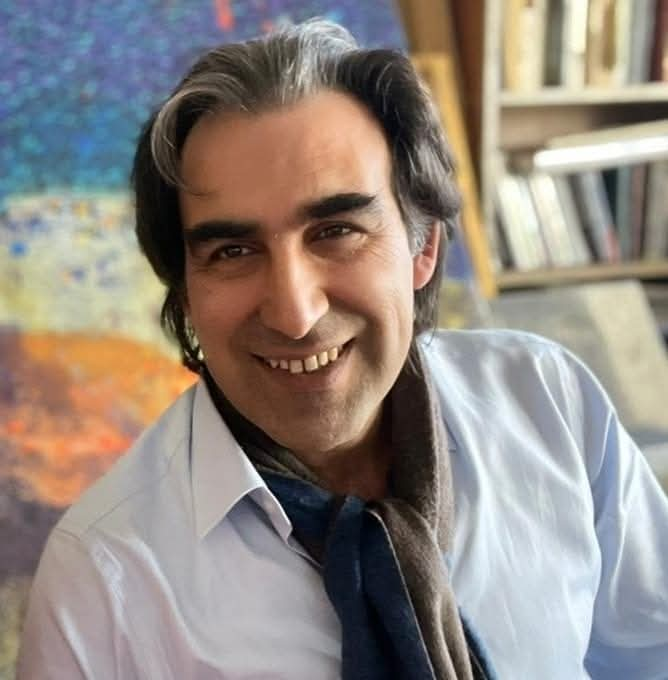
İbrahim
Alhassoun is a Syrian painter born in Aleppo in 1972. He embarked on his artistic
journey early in life, a path that led him to pursue formal art education. He
holds a higher diploma from the Faculty of Fine Arts, Department of Oil
Painting, at Damascus University.
Alhassoun
has an extensive and distinguished exhibition record, participating in numerous
collective and solo shows across Syria, Turkey, Egypt, Saudi Arabia, and other
parts of the world. His solo exhibitions span from 2004 to 2023, with venues in
Cairo (2023), Istanbul (2018, 2017), Ankara (2016, 2015), Damascus (2011,
2004), Alicante, Spain (2010), and Aleppo (2008, 2007, 2006). His work has also
been featured in collective exhibitions in Sharjah (2022), Cairo (2022),
Granada, Spain (2022), Norway (2020, 2021, 2022), Geneva (2019), Berlin,
Germany (2017), Istanbul (2016), and Izmir (2015, 2016).
His
artistic excellence has been recognized through multiple national and
international awards. Among them are the prestigious Alburda International
Award in Abu Dhabi in 2016, 2017, and most recently in 2023 at the Louvre
Museum Abu Dhabi. He also received the Sharjah Calligraphy Award (Modern Trend)
in 2022, the First Prize of the Teachers Syndicate in Syria in 2006, and an
Honor Mention Award for Youth Exhibition in Damascus in 2003. His artworks are
held in significant collections, including the Marmara Museum in Istanbul and
the Museum of Modern Syrian Art in Damascus.
Ibraheem
Alhassoun's artistic style is notably abstract, characterized by a relentless
pursuit of innovation across formal, technical, and intellectual dimensions
within his work. This continuous research allows him to achieve remarkable
diversity and a powerful ability to manifest his ideas on the canvas. His art
is deeply influenced by his environment and heritage, which he translates
through an abstract lens.
He draws
significant inspiration from his regional heritage, interpreting it in an
abstract manner. This is evident in series like "Mother's Dress" (ثوب أمي),
where he explores the fusion of colors and shapes found in traditional attire
from his area, transforming them into abstract compositions. He also creates
series related to the form of the rural mud house prevalent in the countryside
of Idlib and Aleppo, translating these architectural elements into abstract or
semi-abstract forms within his works.
He
constantly seeks to discover and utilize various raw materials and media,
leveraging their utmost expressive potential in his creations, contributing to
the textural and layered qualities often seen in abstract art.
Alhassoun
re-creates the forms of surrounding objects, representing them visually in
novel and fresh ways, often moving beyond literal representation into
abstraction.
His
paintings are not primarily built upon a dramatic narrative or a predefined
concept of beauty. Instead, their essence lies in the method of their creation,
intertwined with the very process he undertakes to realize and construct them.
This emphasis on process, texture, and layering is a hallmark of many abstract
art forms.
Overall,
Ibraheem Alhassoun's work reflects a profound engagement with his cultural roots
and the artistic process itself, where the exploration of materials, the
abstract transformation of familiar forms, and the influence of his heritage
lead to unique and meaningful visual expressions.